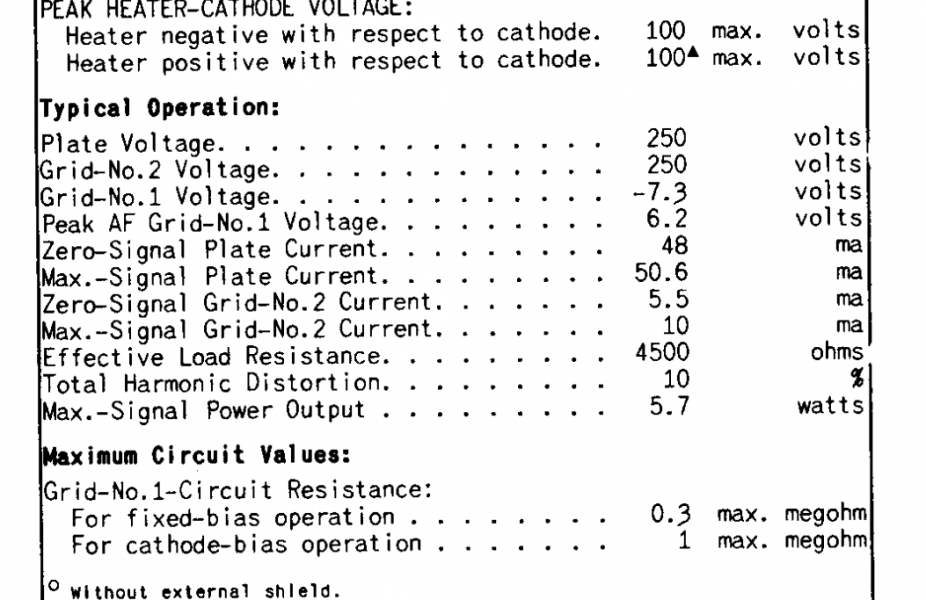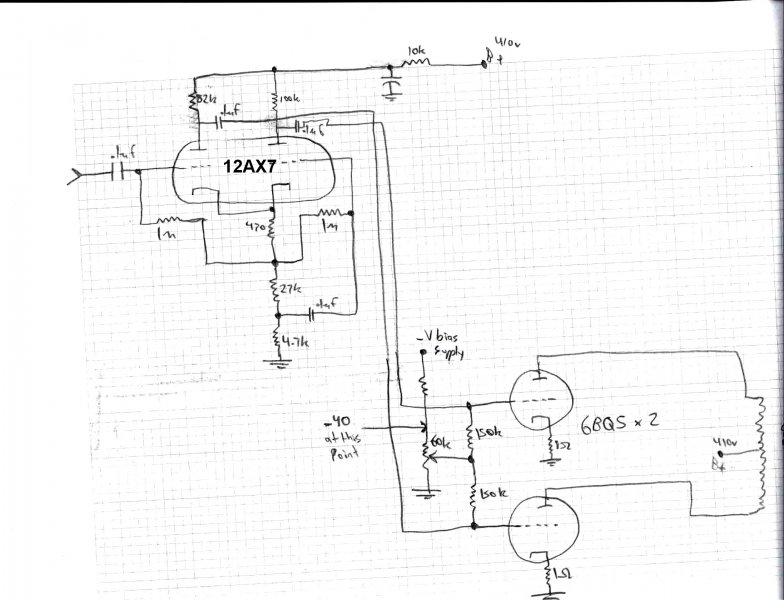I encountered an odd-ball this morning. I'm working on my first attempt at a tube bass amp using the tubes and iron from a Baldwin 46C organ amp chassis. The power amp is a quad of 6BQ5's. I have the power section cathode-biased at roughly 65% for safety, and the PI is a JCM800 circuit but using a 12AU7 tube and a 27K tail instead of 10K. Coupling caps are all .1uf since this is for a bass. The 6BQ5 screen sets are fed through a pair of 10K resistors from the choke side of the power supply with 4.7uf screen decoupling to the preamp ground. The cathode resistors on each pair of 6BQ5's are a 1-ohm 1% resistor (for plate current measurement) in series with a 470 ohm 5% sand-block resistor. Grids have 150K to main chassis ground.
What I'm seeing is a bit of what looks like soft clipping at the outputs of the PI and the PA when the input goes past a certain point. This by itself is normal, since all amps clip at some point when the input increases. What is strange is that the clipping disappears if I put my hand near the output jack of the signal generator. I've attached extra grounds from the scope chassis to the amp chassis, and the signal generator is chassis-grounded via the output cable. I didn't notice the clipping change at all with my hand near any other cable or near the amp chassis itself (don't worry, I always observe safety precautions when working with high voltage). I have never seen this phenomenon with any other amp build.
My assumption is that somehow the 'scope measurement is somehow corrupt, since I don't see how my hand being near the jack (NOT touching, just near) would eliminate the clipping. Oh, the clipping isn't eliminated with the measured signal being reduced at all; instead, its as though the clipped off part is added back on to the sine wave tip.
Does anyone have any clue as to what I'm seeing here?
What I'm seeing is a bit of what looks like soft clipping at the outputs of the PI and the PA when the input goes past a certain point. This by itself is normal, since all amps clip at some point when the input increases. What is strange is that the clipping disappears if I put my hand near the output jack of the signal generator. I've attached extra grounds from the scope chassis to the amp chassis, and the signal generator is chassis-grounded via the output cable. I didn't notice the clipping change at all with my hand near any other cable or near the amp chassis itself (don't worry, I always observe safety precautions when working with high voltage). I have never seen this phenomenon with any other amp build.
My assumption is that somehow the 'scope measurement is somehow corrupt, since I don't see how my hand being near the jack (NOT touching, just near) would eliminate the clipping. Oh, the clipping isn't eliminated with the measured signal being reduced at all; instead, its as though the clipped off part is added back on to the sine wave tip.
Does anyone have any clue as to what I'm seeing here?




